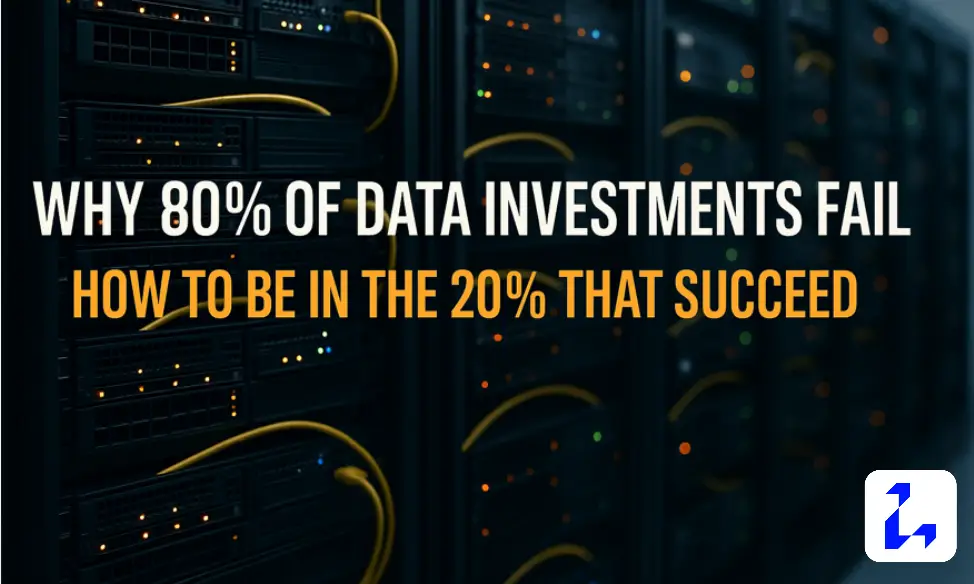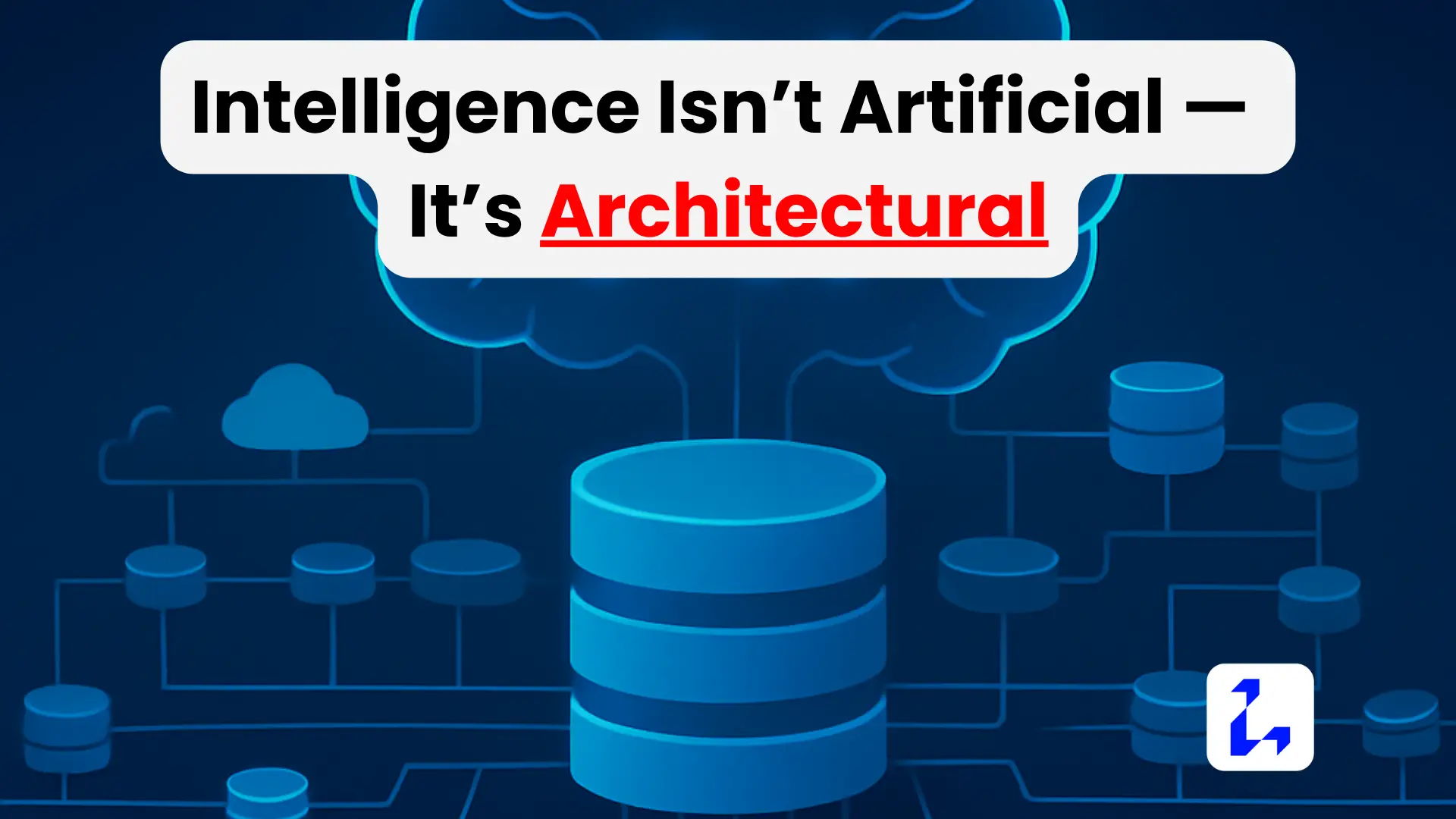Only 20% of executives say their data initiatives consistently deliver measurable business value.
That’s a staggering figure, given the trillions invested globally in analytics, AI, and “digital transformation” over the past decade. The paradox is clear: most organizations aren’t drowning in a lack of data — they’re paralyzed by a lack of data clarity.
The Real Problem Isn’t the Data. It’s the Disconnect.
In boardrooms everywhere, CEOs and CFOs approve large analytics budgets expecting meaningful returns — sharper forecasting, faster decision cycles, and new competitive insights. Yet, too often, those returns never materialize. The dashboards are colorful, but the decisions remain cloudy.
The root cause isn’t that companies lack sophisticated tools. It’s that many data programs are built by technologists for systems, not by strategists for decision-makers.
Executives don’t need another reporting layer. They need clarity that drives confidence — clarity about where margin is eroding, which customers are worth more to retain, or how to reallocate resources to seize opportunity faster.
When analytics fail to answer those questions directly, you’re not funding insight — you’re funding infrastructure. And that distinction is where most organizations lose traction.
When “Data-Driven” Doesn’t Mean What You Think
Many leadership teams proudly describe themselves as data-driven. But too often, this means chasing volume instead of value.
A company might generate thousands of reports yet still struggle to decide which levers to pull to improve performance. The promise of predictive analytics and AI becomes just another layer of complexity if it isn’t anchored to specific business outcomes.
Consider this: a global retail company recently restructured its analytics division around business questions, not data domains. Instead of “customer data” or “sales data” teams, they created “customer retention” and “margin optimization” squads. The result? A 15% improvement in campaign ROI and a measurable uplift in operational efficiency.
The takeaway: clarity starts when data aligns with intent.
The Strategic Shift: From Information to Intelligence
The best organizations don’t treat data as a byproduct of operations — they treat it as a core capability that fuels strategy.
They link every dataset, model, and dashboard to a measurable business outcome: cost reduction, growth, or risk mitigation. In these companies, data doesn’t sit in silos or gather dust in reports. It lives in the rhythm of executive decision-making.
Three practices distinguish top performers:
- Outcome-Based Data Strategy – Every data initiative must begin with a specific business question tied to measurable value. If it doesn’t move a KPI that matters to the board, it doesn’t make the roadmap. This discipline transforms analytics from an IT expenditure into a performance engine.
- Executive Ownership – Accountability for data cannot reside in IT alone. The CEO, CFO, and COO must view data as part of their decision architecture — a strategic enabler, not a technical dependency. When leadership owns data outcomes, alignment follows naturally across the organization.
- Continuous Governance – Data quality is not a one-time project; it’s an ongoing practice. Like financial reporting or risk management, it requires continuous stewardship to maintain trust, compliance, and accuracy. The payoff? Organizations that embed data governance into daily operations are 2.5x more likely to achieve revenue growth above industry average.
Building a Culture of Decision Intelligence
The next frontier in analytics isn’t about collecting more data — it’s about creating decision intelligence. This means building frameworks that translate raw information into clear, confident choices.
For example:
- Sales leaders can dynamically adjust go-to-market spend based on real-time ROI signals.
- Finance teams can forecast with accuracy even amid economic volatility.
- Operations can pivot faster when risk indicators change.
Each of these outcomes stems from aligning analytics to specific decision points, not to datasets or systems. The organizations that thrive are those that define success by the quality and speed of their decisions — not by the volume of their dashboards.
Actionable Takeaway: Start with the Decision, Not the Dataset
Before greenlighting your next data warehouse, platform migration, or AI pilot, pause and ask one deceptively simple question:
“What decision will this help us make faster, cheaper, or smarter?”
This mindset shift changes everything — how you prioritize projects, measure ROI, and communicate success.
It reframes data as a strategic asset rather than a technical deliverable. Suddenly, your analytics function becomes a decision partner — not a service provider.
The Executive Edge
Data doesn’t create value. Decisions do.
But in today’s environment of uncertainty and noise, the edge belongs to leaders who can translate complex data landscapes into decisive, confident action.
If your organization’s data strategy feels sophisticated but your decisions still feel uncertain, it’s time to reframe the conversation — from systems and silos to strategy and outcomes.
Because the companies that master data clarity aren’t just making better decisions.
They’re shaping a future where every choice is powered by insight, not instinct.
💬 Question for Leaders:
As you review next year’s analytics investments, ask:
“Will this initiative make our decisions faster, smarter, or more certain?”
If not, you may be funding dashboards instead of outcomes.
Save this post as a guide when evaluating your next data strategy discussion.






